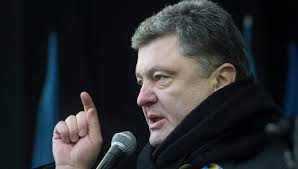The response to my PONARS memo from Yuriy Matsiyevsky challenges my account on four points: 1) explaining the timing of the insurgency; 2) explaining the spatial variation of the insurgency; 3) explaining the sources of fear among the locals; and 4) the use of terms in my analysis. I address each of these points below.
On the Timing of the Insurgency
Matsiyevsky argues that the secessionist mobilization in the Donbas started only after the Crimean annexation. Actually, the Donbas insurgency did not emerge out of thin air in April. It was preceded by several months of anti-Maidan mobilization in Donetsk and Luhansk, which started in late January. The first self-defense units in these cities were organized in response to the diffusion of the Euromaidan protests to the regions and the capture of local state administrations in western and central Ukraine. After Yanukovych’s ouster, self-defense units emerged in many smaller towns across the Donbas. The first self-defense unit in Slavyansk was organized in late February, well before Strelkov’s arrival into town.
I certainly recognize the role of Russia’s non-violent and swift annexation of Crimea in lowering the perceived costs of secession among Donbas activists. As I write in my research paper (see the summary here) prepared for the Danyliw seminar at the University of Ottawa:
“Russia’s invasion of Crimea under the pretext of protection of the ethnic Russian minority and its subsequent annexation following a dubious referendum became a model for pro-Russian activists in other regions. It set a precedent of a successful and peaceful secession, which could now be repeated elsewhere. It also showed that Russia was willing to deploy its troops to protect its co-ethnics in Ukraine – a principle which could have helped to reassure other secessionist leaders that they could count on Moscow’s support. Given that Russian officials continued to argue that the new government violated the rights of Russian-speakers in Ukraine, the repeat of the Crimean scenario might have seemed likely at the time. The costs of further secession could have also seemed lower given Ukraine’s inability to resist Crimean annexation.”
Still, the Crimea annexation would have mattered little had there been no or minimal demand for a special autonomous or independent status among Donbas residents. This leads me to the second point.
On the Spatial Variation of the Insurgency
The failure of a secessionist movement to gain ground across most of Ukraine’s southeast is, in fact, the key evidence that external variables were not decisive in producing the insurgency. There was also a substantial variation of support for the insurgency within Donbas itself. It is impossible to explain this variation without understanding the domestic drivers behind the insurgency linked to a peculiar regional identity, perception of the region’s special political status and its loss following Euromaidan and the intensity of pro-Russian (or even pro-Soviet) sentiments unique to the region, but also variable within the region. As I point out in my Danyliw paper, the secessionist movement failed to take root in towns where over 80% of the population were native Ukrainian speakers, while most towns remaining in the rebel-held areas in the Donbas have fewer than 20% native Ukrainian speakers. The pre-existing beliefs and political orientations of Donbas residents are crucial in explaining the variation in insurgency’s success.
On the Sources of Fear
There is no doubt that fear-mongering in the Ukrainian and Russian media amplified the perception of threats coming from Euromaidan. However, it’s also important to recognize that extreme nationalist groups were not the invention of Russian propaganda or agents of Russian security services. As one study shows, the Right Sector has been a leading force in violent confrontations and certainly played a key role in the capture of government buildings in the region. The far-right party Svoboda was the most active protest participant out of all political parties both in Kyiv and in the regions. The presence of extreme nationalists during Euromaidan and their reliance on violent methods of resistance puts it in stark contrast to the non-violent Orange Revolution when people like Oleh Tiahnybok (Svoboda’s leader) and neo-Nazi groups like Patriot of Ukraine were nowhere to be seen.
Furthermore, in order to explain the particular intense emotional reaction of many Donbas residents to the presence of extreme, nationalist groups in Euromaidan, one has to look at their prior views. One study of Donetsk residents in 2004 showed that they viewed nationalists with the highest antipathy of all possible groups. Hence, after Euromaidan, the nationalist hero Stepan Bandera, whose portraits figured prominently during protest rallies, was viewed in negative terms by 79% of Donbas residents, and the intensity of their negative attitudes was markedly stronger than in others regions of the southeast. Without prior beliefs peculiar to Donbas, the media coverage of actions of the extreme right groups during and after Euromaidan would not have produced such a powerful emotional response.
On the Use of Terms
Matsiyevsky also objects to my use of three terms (or characteristics) of the revolution in Ukraine. First, he disagrees with the notion that the revolution represented a “violent regime change.” I don’t see why this is a problem. No one disputes the use of violence throughout the course of Euromaidan both by the government and by the protesters. In fact, the revolution prevailed on February 21 exactly because the protesters were willing to use force in response to the violent actions of the authorities. Had the protesters relied exclusively on non-violent methods, the revolution would have been crushed. One may question the extent to which the revolution amounted to a “regime change.” I would argue that, at least on the electoral level, we have seen major democratic progress in Ukraine with two elections in a row widely recognized as free and fair. In this sense, I think it is reasonable to say that the revolution produced a more democratic political regime, but the sustainability of this shift remains uncertain.
Secondly, Matsiyevsky disagrees with the notion that the Ukrainian state experienced fragmentation during the revolution. However, it is similarly hard to dispute the fact that the diffusion of protests to the region led to the loss of the government’s monopoly on the legitimate use of force in numerous cities in western and central Ukraine. As I observed in a PONARS blog in late January:
“The takeovers of state administrations in the regions have reconfigured the structure of sovereign authority in Ukraine. In essence, the Ukrainian government lost its sovereign power over most of the cities in the so-called “orange” oblasts where Yushchenko and Tymoshenko gained solid majorities in the 2004 and 2010 presidential elections. At the same time, the government’s continued presence in rural areas (“raions” and villages) of these oblasts has fragmented the Ukrainian state and established pockets of self-rule and areas of ambiguous or contested sovereignty.”
My use of the term “state fragmentation” reflects the empirical reality of successful contestation of sovereign authority in parts of Ukraine in January-February 2014.
Finally, Matsiyevsky objects to characterizing the ascendance of opposition leaders to the top government positions as the “capture of power.” My use of this term is meant to convey that it happened as a result of a very intense and divisive political struggle, which resulted in the de facto surrender of power by the incumbent president. If we don’t recognize the opposition elites’ concerted effort to oust the sitting president outside of the regular electoral process, we are not doing full justice to Ukraine’s revolution.
————–
Related posts:
The Limits of Kudelia’s Argument: On the Sources of the Donbas "Insurgency" (10/31/2014) by Yuriy Matsiyevsky.
Reply to Andreas Umland: The Donbas Insurgency Began At Home (10/8/2014) by Serhiy Kudelia.
In Defense of Conspirology: A Rejoinder to Serhiy Kudelia’s Anti-Political Analysis of the Hybrid War in Eastern Ukraine (9/30/2014) by Andreas Umland.
"Domestic Sources of the Donbas Insurgency" (PDF) (9/15/2014) PONARS Eurasia Policy Memo No. 351 by Serhiy Kudelia.











